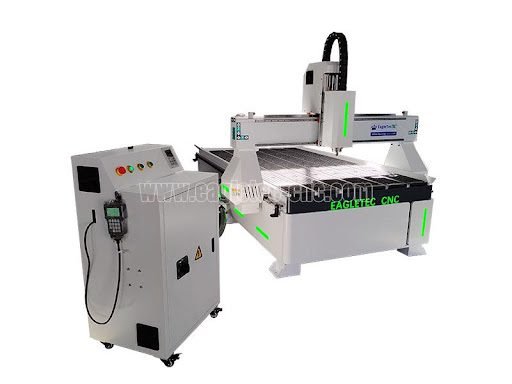Last Updated on January 9, 2024 by Umer Malik
If you’re a woodworker, you know the value of having a Cnc woodworking router in your workshop. But are you getting the most out of it? Whether you’re a novice or an experienced user, there’s always room to improve your skills and take advantage of this powerful tool. In this post, we’ll share five tips on how to get the most out of your Cnc woodworking router and unleash its full potential! So please grab a cup of coffee, sit back, and let’s dive into it!
Table of Contents
Understand the Benefits of Cnc woodworking routers
Cnc woodworking routers offer many benefits, including faster cutting speeds and less waste. Here are five ways to get the most out of your router:
1. Use a profile bit. A profile bit creates an angled surface on the edge of the shaving, which allows the router to cut more quickly and accurately.
2. Use a straight bit. A straight bit creates a smooth, even surface on the edge of the shaving, which prevents bits from getting caught in the fence and causing dust build-up.
3. Use a feathering knob. A feathering knob gently guides the bit as it moves across the workpiece, preventing gouging or tear-out.
4. Make sure your workpiece is appropriately supported. If your workpiece is unsupported, gravity will cause it to sag and pull against the bit, causing wear and tear on your router tool heads and bits over time. Support your workpiece with a flat base or clamps to ensure accurate cuts every time.
5. Keep your router clean and lubricated.
Choose the Right Router for your Needs
You may wonder which one is right for you if you’re new to Cnc woodworking routers. Here are some things to consider when choosing a router:
1. What type of woodworking do you intend to do?
There are three main types of routers: plunge, rotary, and CNC. Each has its own benefits and drawbacks.
Plunge routers are great for cutting out small items, such as a screw hole in a piece of wood. They’re also suitable for shaping pieces using paring knives or chisels.
Rotary routers are great for larger jobs such as cutting entire boards or trimming edges on furniture pieces. Because they have multiple blades, they can also handle more complex cuts than a plunger router.
CNC routers are the kings of the woodworking world. They can handle incredibly intricate cuts, and even mounted on a CNC milling machine, they can turn out parts that look like a skilled artisan cut them. However, they’re also the most expensive option and require a bit more knowledge to use effectively.
Get to Know Your Cnc woodworking router Controls
You can do a few things to get the most out of your cnc woodworking router controls. Make sure you understand how to use them and what they do. You’ll be able to make precise cuts with less effort.
1. Get familiar with the controls: The Cnc woodworking router controls are located on the front of the machine. They include buttons for various operations, such as cutting, moving the bit, and changing the speed. Some knobs allow you to adjust settings like depth and width.
2. Use the right bit: Choosing the right bit is vital when using a Cnc woodworking router. Choose one that’s suited for the material you’re working with. For example, use a carbide-tipped bit for hardwood or plywood materials.
3. Keep your hands clean: Dirt and grime can cause your machine to malfunction or produce inaccurate results. Please keep your hands clean before starting each project and wipe down the controls regularly to keep them operating smoothly.
4. Take breaks: If you’re working on a long project, take occasional breaks so your hands and eyes can rest. This will help avoid fatigue and ensure good results from your work.
Maximize Your Cutting Capabilities with Settings and Tips
For anyone using a CNC router, maximizing their cutting capabilities is essential. This blog post will look at tips and settings to help you get the most out of your machine.
First and foremost, it is essential to correctly set your router’s bit depth and speed before starting your project. Bit depth refers to how deep the bit can travel into the material, while speed determines how many times the machine moves the bit per minute. Setting the bit depth too low will cause the router to overheat and likely break down while setting it too high can result in inaccurate cuts. A good range for bit depth is 1/64th to 3/32nd inch, while speeds should be between 1,000 and 5,000 RPM.
Once you have correctly set your bit depth and speed, you need to ensure that your woodworking frame is aligned with your router blade. This alignment can be done by hand or using a protractor or other device. If using a hand alignment method, be sure to use a light touch on the router so that you do not cause dents or scratches in the wood. If using a device like a protractor or a dial indicator, ensure the blade is centered in its slot on the workpiece before starting your cut.
Once you have correctly aligned your machine and frame, it’s time to start cutting! Use light strokes with straight bits so that you do not.
Conclusion
The truth is that there are many different ways to get the most out of your Cnc woodworking router. However, if you want to achieve the best results, following a few simple guidelines is essential. First and foremost, always use the correct bit for the job at hand. Secondly, keep your work area clean and organized to find what you’re looking for easily. Finally, ensure you have a good supply of replacement parts and accessories to keep your machine running smoothly.
Apart from that, if you are interested to know Advantages of CNC Router Machines then visit our Technology category.



























